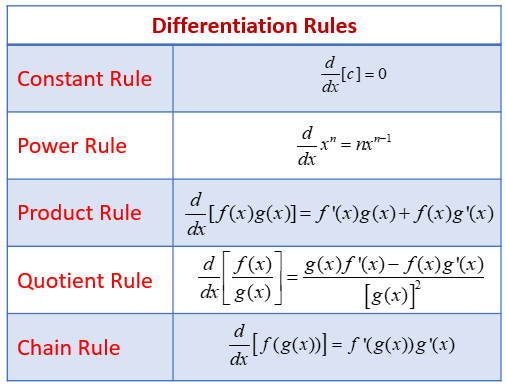

Because such pebbles were used for counting out distances, tallying votes, and doing abacus arithmetic, the word came to mean a method of computation. The word calculus is Latin for "small pebble" (the diminutive of calx, meaning "stone"), a meaning which still persists in medicine. In mathematics education, calculus denotes courses of elementary mathematical analysis, which are mainly devoted to the study of functions and limits.
#Differential calculus product rule free#
So, product rule is used when two different functions are given. One function is not dependent on the other function.įrom above discussion we can conclude that we should use chain rule when you see functions to be differentiated within each other and use the product rule when you see functions to be differentiated in multiplication that is when the two functions are in product form.Look up calculus in Wiktionary, the free dictionary.



It is read as the derivative of function ‘f’ with respect to the variable x. There are different methods to find the derivatives of the given functions. These methods are: We can explain it as the measure of the rate at which the value of y changes with respect to the change of the variable x. The derivative of a constant function is always zero. But, to differentiate a function the rules of derivatives must be known. calculating the derivative requires the use of basic definition very rarely. Differentiation is one of the two key areas of calculus apart from Integration.ĭifferentiation i.e. Differentiation in mathematics is the rate of change of a function with respect to a variable.


 0 kommentar(er)
0 kommentar(er)
